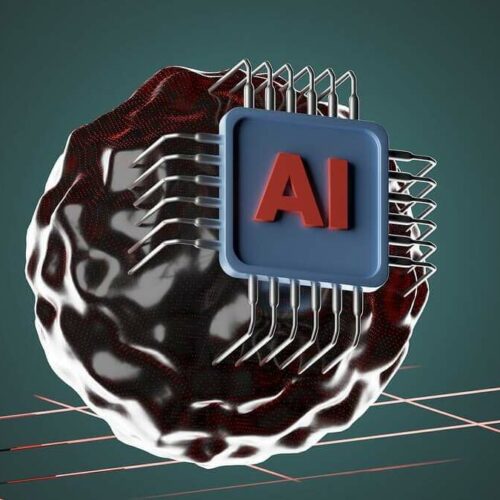AI text generators are transforming the way we produce content, and we’re becoming increasingly reliant on their ability to create human-like content. But are they better content writers than humans? Here’s why we should still entrust important content to human copywriters.
An article by Debbie, who believes in the potential of AI to collaborate harmoniously with humans and open up amazing new possibilities.
In the battle over share of mind, content wars have been raging since the dawn of the Internet. But now a different sort of player is disrupting the battlefield and wreaking havoc on content strategies. AI has joined the fray. The question on everyone’s mind now is: How much of a threat does AI pose to humans, human intelligence and human capabilities?
Better or faster: the choice is yours
For now, the consensus is that although AI tools are faster, humans still write better. But how much better? Is human-written copy superior enough to outweigh the main benefit of AI text generators, namely their incredible speed and efficiency? Does AI save us enough time and money to forego a certain level of quality? As AI technology improves, our answers to these questions could change.
Even more worrying is the possibility that AI will affect the way we perceive copy and that, over time, AI-generated copy will become the norm, reducing our quality expectations and rendering human writers obsolete in a more insidious way. In this scenario, the ubiquity of AI output could erode the aspects of our writing that currently make it more “human”. But right now, let’s take a brief look at AI copywriting tools to better understand the issues at stake.
How do AI copywriting tools work?
AI copywriting tools have been designed to closely mimic human writing. They are based on advanced natural language processing (NLP) models and are usually powered by large language models, such as GPT-3.5 or similar architectures. These models have been trained on datasets containing a wide range of human language patterns and text data collected from various sources, including books, websites, articles and other written content.
Users can input a prompt or a specific task for the AI text generator to complete. The language model receives the input and processes it to generate a response. It then produces output based on the patterns and information it learned during the training phase. Developers often collect user feedback to identify and fix mistakes, refine the model and improve the quality of the generated copy.
These days, there are a multitude of apps and AI writing assistants on the market promising professional-quality, plagiarism-free content. What they all have in common is the ability to generate content at scale, saving valuable time for human writers. Not only that, they offer features such as SEO optimisation, templates, headline and idea generators, editing, fact-checking and more. AI content writers are available as paid plans and subscriptions, or even for free with character limits. Some even support multiple languages.
What are the limitations of AI content writing?
Despite their impressive capabilities, AI writers still face quite a few stumbling blocks. The generated text can sometimes be misleading or inaccurate. And because the language models are based on patterns in existing data, AI may struggle to produce truly creative or innovative content. Furthermore, not all AI writing tools have in-depth knowledge of specific industries, so the content they generate often lacks substance.
As a non-human, AI is unable to interpret the context of a topic or grasp subtle nuances, which can lead to inaccuracies or inappropriate content. It also lacks the emotional intelligence and empathy of a human. It is therefore challenging for AI to convey emotions effectively in writing. Being a machine, AI is not designed to provide subjective opinions or insights; this may hold it back or render it entirely ineffective for certain types of content that call for a point of view.
AI is also limited when it comes to uncommon languages or dialects, an area which still needs further development.
Are humans better copywriters than AI?
AI text generators are transforming the way we produce content. As we continue to discover the many benefits of these powerful tools, we’re becoming increasingly reliant on their ability to create human-like content in a matter of minutes – complete with SEO optimisation. But are they better content writers than humans? In terms of quality, the answer is still a resounding “no”.
It comes as no surprise that humans are better at, well, being human. And a big part of being human is possessing the unique capability of human expression. In the end, the intelligence of AI is still “artificial” in that the language model is trained to simulate human cognition. At its heart, the machine runs according to algorithms, which are non-human processes. So perhaps the definition of intelligence in this sense is merely “if it can fool us”.
Sometimes it can, but often it can’t. Humans can’t beat AI writers in terms of speed but we still outperform them at other levels. At this stage of development, AI is a useful aid for human writers but cannot replace them entirely. While it does help us save time and provide ideas, it lacks the human creativity, understanding of context and ethical considerations that shine through in high-quality copywriting.
What is the downside of AI-generated text?
It’s very telling that speed and volume are still the main selling points of AI. Humans simply can’t generate vast amounts of copy as fast as AI does. But this doesn’t mean we can sit back and let the machines take over. They are far from ready to produce content without human intervention. For one thing, humans still need to check the content for errors, since the accuracy of AI depends on how the AI model was trained. And because AI is based on content that has already been created, AI can inadvertently produce output that resembles existing material. For this reason, many tools now feature a plagiarism checker to ensure that all generated copy is original.
AI models may also have biases based on their training data, which could lead to unfair content, stereotypes or discriminatory views. This raises ethical concerns about the spread of misinformation or biased viewpoints. Given these and many other shortcomings, AI copywriting tools still require human oversight and intervention to ensure the quality, accuracy and ethical standards of the generated content.
What do AI content generators mean for the future of content?
With the accelerated pace of content creation through AI, human writers will likely face higher expectations and tighter deadlines to match the speed of AI writing tools. As the demand for content surges, customers who favour human writers may expect faster output with no compromise on quality.
What about the sheer volume of content that will be generated in the years to come? Now that entire blog posts can be created with the click of a button, we risk being inundated with online content, which raises the question: Who will read it all? This massive change in the online landscape will no doubt have further consequences. While content used to arise from thoughts, ideas and concepts, clearly articulated, organised and presented to an audience, it is now becoming a collection of words nicely strung together and arranged in a human-like fashion. As a result, much of what we read may no longer have the same relevance.
Can you imagine a day when every word will have been generated in every possible combination at lightning speed, and eventually it will all have to be recycled? That’s when I’ll be looking for the Originality button on my AI text generator.

